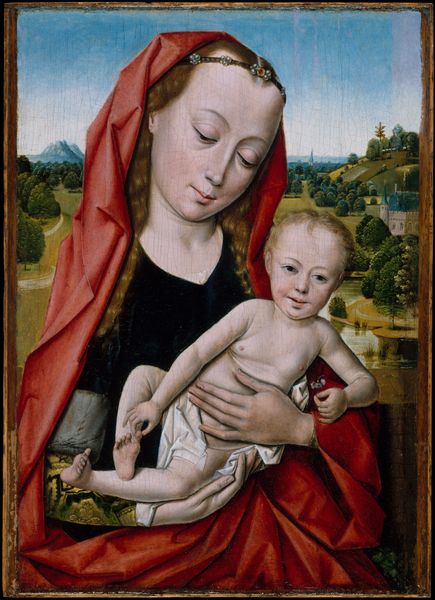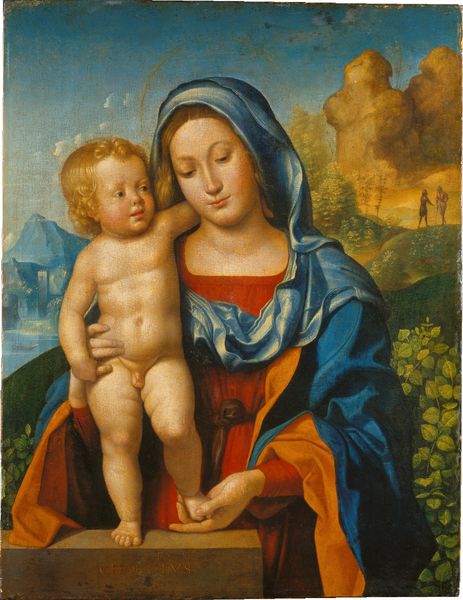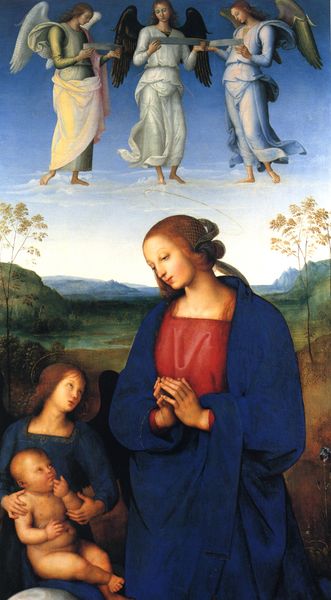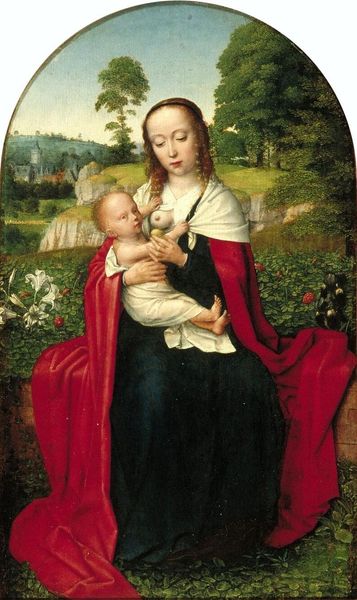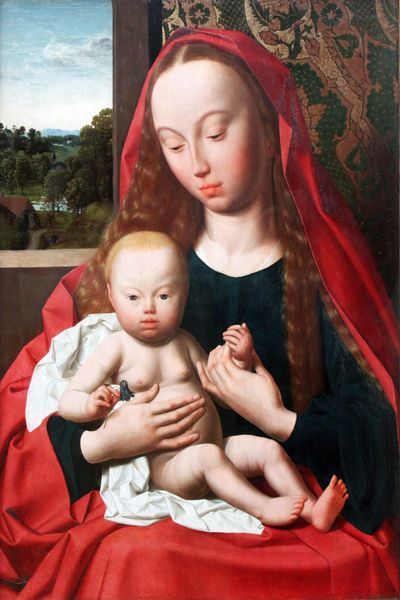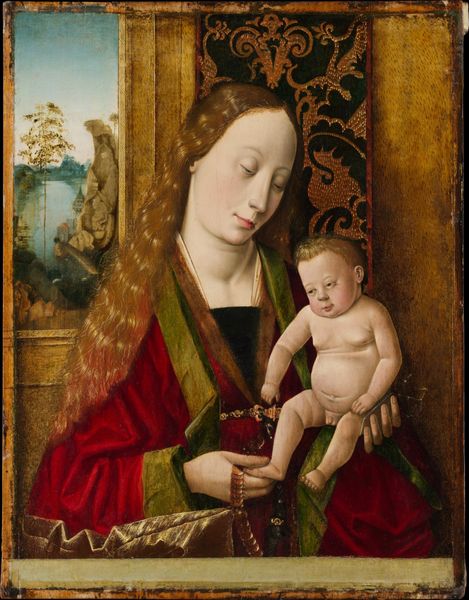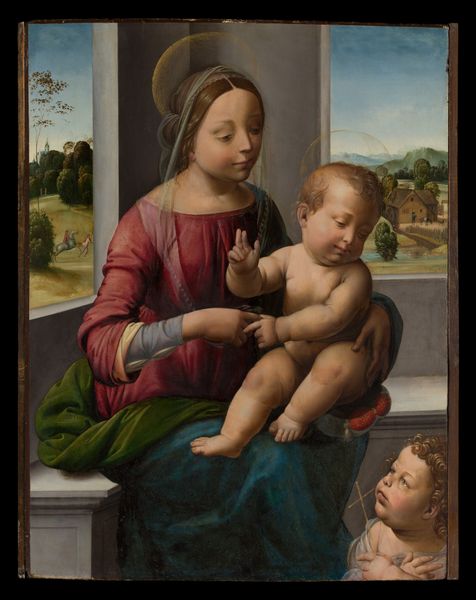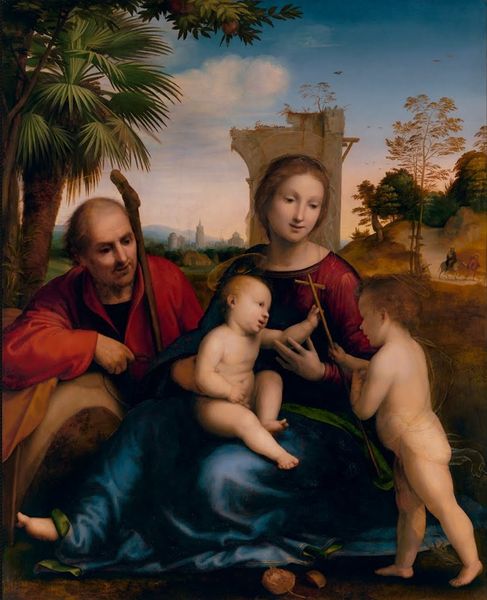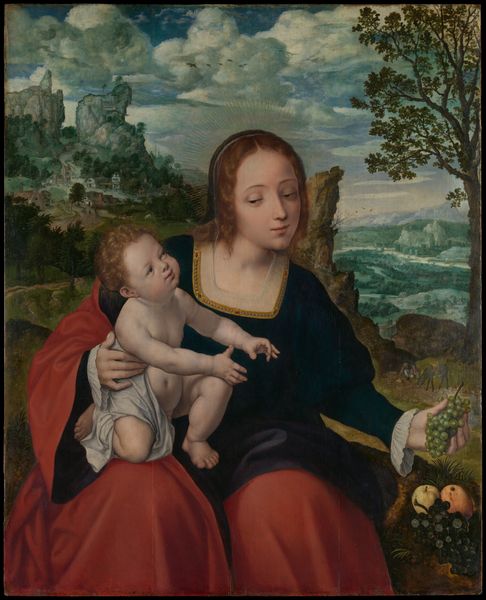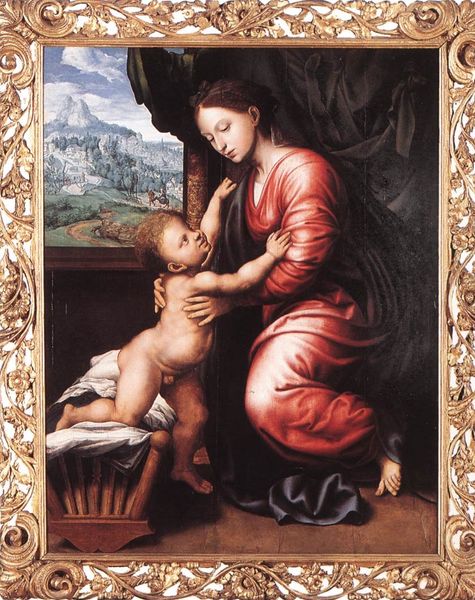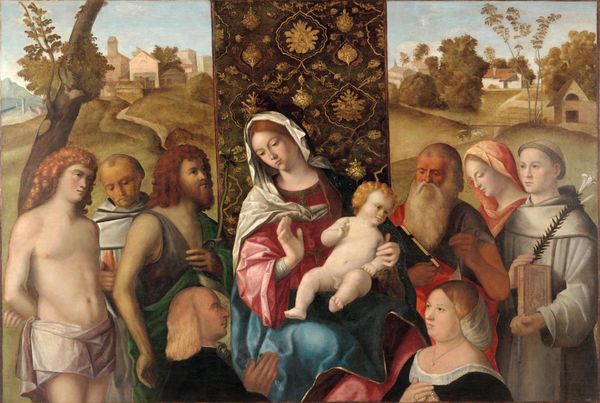
painting, oil-paint
#
portrait
#
high-renaissance
#
painting
#
oil-paint
#
figuration
#
child
#
christianity
#
italian-renaissance
#
christ
Dimensions: 105.7 x 72.1 cm
Copyright: Public domain
Curator: What strikes me first is the tender, almost melancholy expression on Mary's face. Editor: Yes, it’s quite somber. This piece is attributed to Mabuse, or Jan Gossaert, dating back to around 1520. It's an oil painting, aptly named "Madonna and Child playing with the veil". Curator: The veil, a recurring motif...It's about what’s revealed and concealed, innocence and the weight of the future, no? Editor: Precisely. We can contextualize this use of religious iconography alongside the period’s broader shift toward humanism. Note how infant Christ isn't passively held. Curator: No, he's lively! He seems to be pulling away the veil with purpose...It hints at uncovering deeper truths, moving away from the rigid doctrines toward enlightenment, or perhaps foreseeing his destiny? Editor: I agree that there's agency, though it doesn’t necessarily challenge Christian orthodoxy. Instead, I'm drawn to how Mary isn't an ethereal icon here, she is grounded and even weary. Her humanity normalizes the sacred, presenting the Virgin as every woman—oppressed or otherwise. Curator: An earthlier Mary...The lily behind them also captures something. Traditionally it’s a symbol of purity and innocence, yet positioned right there behind the Madonna—it’s almost too on the nose. It becomes about her reputation and society's gaze more broadly. Editor: The lilies may represent purity, but consider their placement near the bed. Could this gesture represent the social and sexual burden placed on women's bodies in religious iconography? Curator: Fascinating... It really is the interplay of these symbols and emotions, so meticulously arranged that amplifies the scene's complexity and layers of interpretation. Editor: For me, this painting invites us to reimagine religious iconography not as fixed doctrine, but rather through a lens of lived experience that accounts for marginalized positions of the time. Curator: I'll certainly reflect on the narrative surrounding female experiences more carefully when I revisit the symbols from now on. Editor: And I will spend a bit more time thinking about how a familiar religious trope can gain new meaning depending on who's beholding the art, and for whom.
Comments
No comments
Be the first to comment and join the conversation on the ultimate creative platform.
